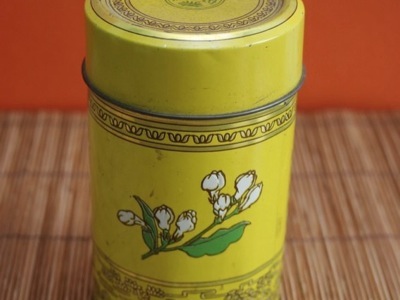
Tea contains plant compounds called polyphenols, which have major antioxidant properties. The polyphenols in tea include EGCG (epigallocatechin gallate), one of the super antioxidants that are being studied for their anti-cancer abilities. The 4 basic types of true tea are black tea, oolong tea, green tea, and white tea. All true teas come from the buds or twigs of the Camellia sinensis bush. Herbal tea refers to infusions of herbs (like chamomile or rosehips) and fruit and doesn’t normally contain any of the traditional tea bush.
Legend has it that one of the key spiritual leaders of Zen Buddhism, Guatama Buddha, discovered tea when some leaves from the Camellia sinensis bush fell into a pot of water he was heating. He drank the potion and decided it had medicinal and restorative powers. And here we are thousands of years later paying $6 for a can of dried bush leaves. Are we enlightened?
Whatever the case, tea does have some “enlightening” physiological powers. It can also be spiritually and emotionally healing as well. Nourishment includes slowing down, taking a break, and enjoying some quiet time. Having a cup of warm tea with a little agave honey might be a perfect way to do that.
Potent antioxidants are something we can all use, especially with our hectic lifestyle and the environmental toxins that are floating around today. Antioxidants prevent or delay the oxidation process. They minimize the effects of free radicals on normal physiological functions. Trust me, that’s a good thing.
I’ll touch on the basics of the most recognized types of tea. All have varying degrees of health benefits, but the least processed forms (exposing them to heat and drying methods) are the best.
White tea – grown in China, more expensive, and produced with the least amount of processing. It is almost colorless and has a delicate flavor.
Green tea – this is the one we’re most familiar with and comes in many varieties from all over Asia. It is stronger in color and flavor, but lower in antioxidant properties than white tea (but still on the high end with overall antioxidant ability).
Oolong tea – the word oolong means “black dragon” in Chinese. This version is more fragrant and flowery and according to some sources can vary between inexpensive Chinese restaurant tea to high-end versions that sell for $10,000 a pound. Huh? And I thought $6 a can was bad.
Black tea – is produced in large quantities in India and Ceylon. (Quick, where is Ceylon?) This is the mainstream stuff, the generic version, the most inexpensive and what we North Americans drink as iced tea. Ugh . . .
Add some green tea to your diet. Buy organic versions and steep them properly. You can even eliminate most of the caffeine by steeping the leaves in hot water for about thirty seconds and then drain off the water. Now steep the leaves again as you normally would. This doesn’t impact the antioxidant abilities or the flavor for that matter, just the caffeine content.
Enjoy! It’s good stuff for a variety of reasons.
*Ceylon became Sri Lanka in 1972. So, where’s Sri Lanka?
http://www.srilankatourism.org/













